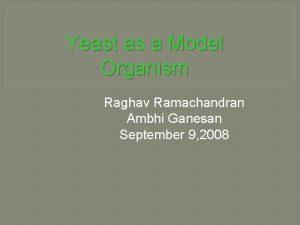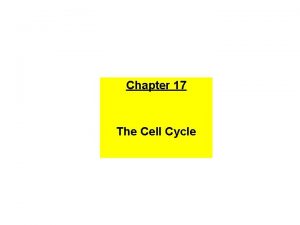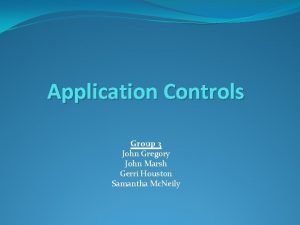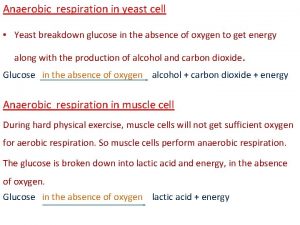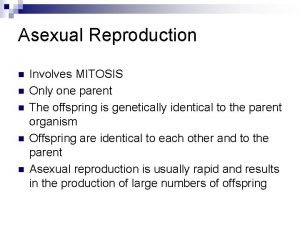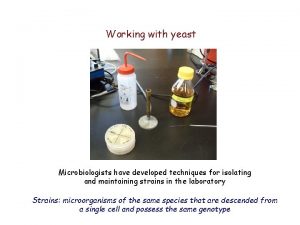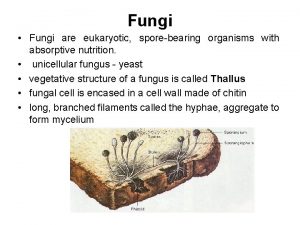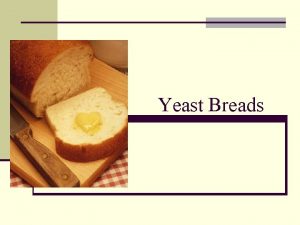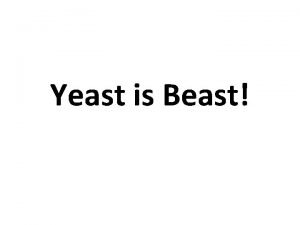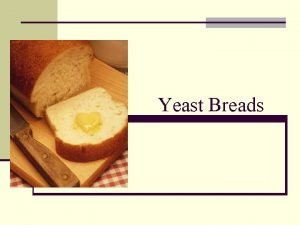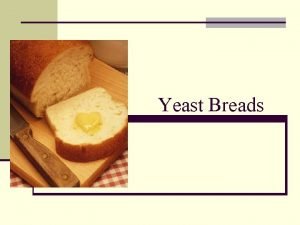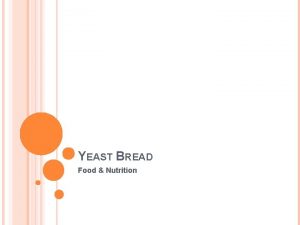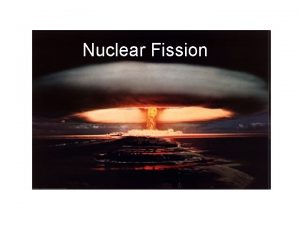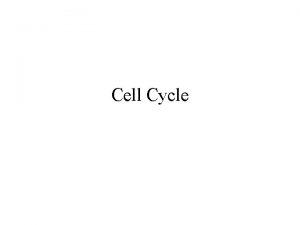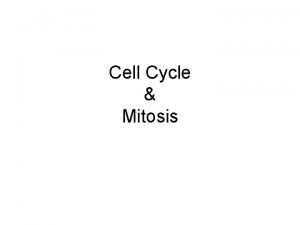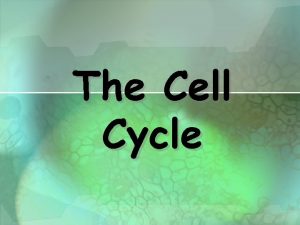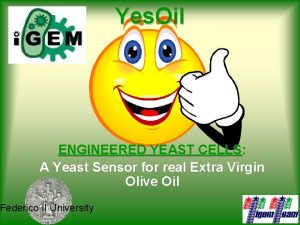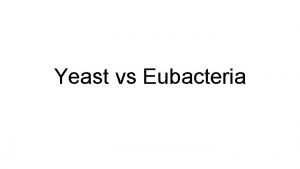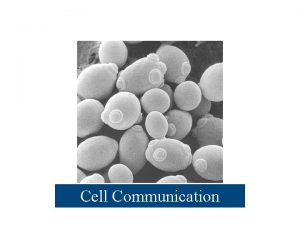Cell cycle controls in fission yeast cells Attila


















- Slides: 18

Cell cycle controls in fission yeast cells Attila Csikasz-Nagy Budapest University of Technology and Economics Caltech, 27/03/2001

Cell cycle Cytoplasmic cycle Chromosomal cycle

chromosome segregation C P A Cdk cyclin destruction misaligned chromosomes Cdk +

APC & Cdk antagonism creates two cell cycle states S phase DNA replication + cell mass Cdk cyclin + degrades G 1 phase - inactivates + C AP + + + Chromosome segregation late mitosis G 2 & early mitosis

Inactive k 3 APC ACT C AP k 4 Nucleus + Active + Cdk cyclin k 2 degraded cyclin Cdk cyclin binding (fast) cyclin k 1 mass AA

APC The phaseplane portrait G 1 stable node saddle point S/M Stable node CDK nullcline: APC nullcline: CDK

mass = 1 ACT = 0 B APC G 1 A mass = 1. 6 ACT = 0 Cell Growth S/M CDK D G 1 mass = 2 ACT = 1. 5 APC CDK C G 1 mass = 1. 75 ACT = 0. 3 Aligned chromosomes S/M CDK

Inactive k 3 APC ACT C P A k 4 Active + Cdk k 1 k 2 Cdk cyclin k 5 CKI mass Cdk cyclin + k 6 degraded cyclin CKI + degraded CKI

pre-Start S/G 2/M CDK total nullcline Cell Growth CKI nullcline CDK total S/G 2/M post-Start G 1 CKI total

Inactive ACT k 3 APC C Active AP k 4 + + Cdk k 1 Cdk cyclin mass + + P kw wee 1 kwr kwee k 25 cdc 25 wee 1 P P Cdk cyclin k 2 degraded cyclin k 25 r cdc 25

M CDKT S/G 2 P Cell Growth Cdk cyclin M Cdk cyclin G 1 CDKA M

The negative feedback loop Nucleus ACT IE inactive unaligned chromosomes IE-P ACT 0 2 dc C Cdk cyclin active +APC Cdk cyclin mass AA

wild type G 1 S+G 2+M mass ACT P Cdk cyclin G 2 Wee 1 Mik 1 CKI M G 1 CKI APC C AP cyclin

wee 1 G 1 S+G 2+M mass ACT Cdk cyclin G 1 CKI APC CKI M G 2 Mik 1 P Cdk cyclin A Cdk cyclin PC

wee 1 - cdc 25 mass ACT M P Cdk cyclin G 1 CKI APC no positive feedback in G 2 Cdk cyclin ACT C AP Cdk cyclin

Experimental data 350 300 250 200 150 100 50 50 0 0 6 8 10 12 14 16 18 0 20 40 60 80 Cell number Birth size (mm) Simulation results Cycle time (min) 350 300 250 200 150 100 50 50 0 6 8 10 12 Birth size (mm) 14 16 18 0 10 20 30 40 50 Cell number 60 0 Cycle time (min) 350

cdc 25 cdc 13 wee cut cdc 13 cdc 2 WT ed P cdc 2 cdc qu an tiz wee 1 Wee 1 activity (%) Robustness of the model Cdc 25 activity (%)

Budapest University of Technology and Economics Bela Novak Akos Sveiczer Bela Gyorffy Zsuzsa Pataki John Tyson Kathy Chen
 Raghav ramachandran
Raghav ramachandran Yeast cell cycle
Yeast cell cycle General controls vs application controls
General controls vs application controls He who controls the past controls the future
He who controls the past controls the future Yeast respiration
Yeast respiration Budding nn
Budding nn Yeast cell growth curve
Yeast cell growth curve Cell cycle and cell division
Cell cycle and cell division Cell cycle and cell division
Cell cycle and cell division Biology.arizona.edu/cell bio/activities/cell cycle/01.html
Biology.arizona.edu/cell bio/activities/cell cycle/01.html Steps of cell cycle
Steps of cell cycle Fungi are eukaryotic
Fungi are eukaryotic The _____ controls what enters and leaves the cell.
The _____ controls what enters and leaves the cell. This organelle controls what enters and exits the cell. *
This organelle controls what enters and exits the cell. * Paranasal sinuses development
Paranasal sinuses development Reabsorption
Reabsorption Thyroid parafollicular cells
Thyroid parafollicular cells How are mitosis and meiosis similar
How are mitosis and meiosis similar Why dna is more stable than rna
Why dna is more stable than rna
